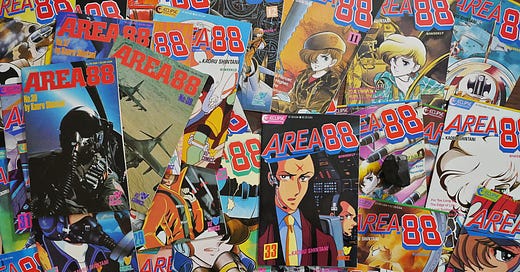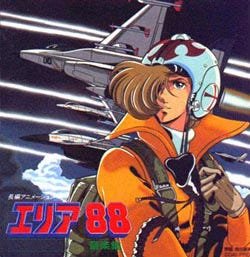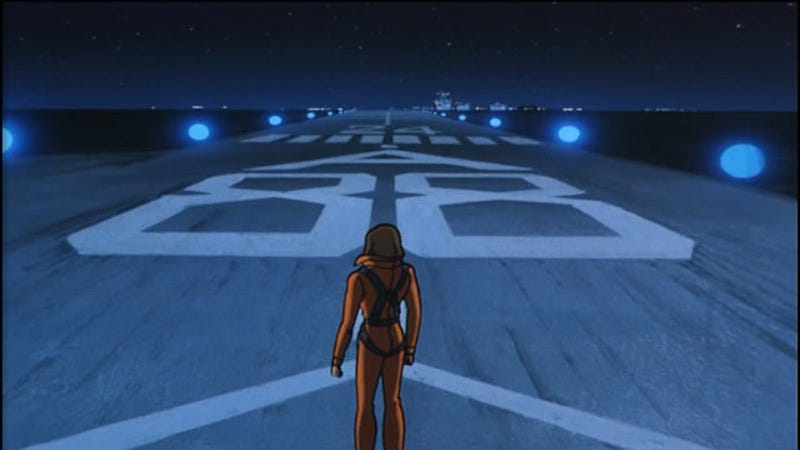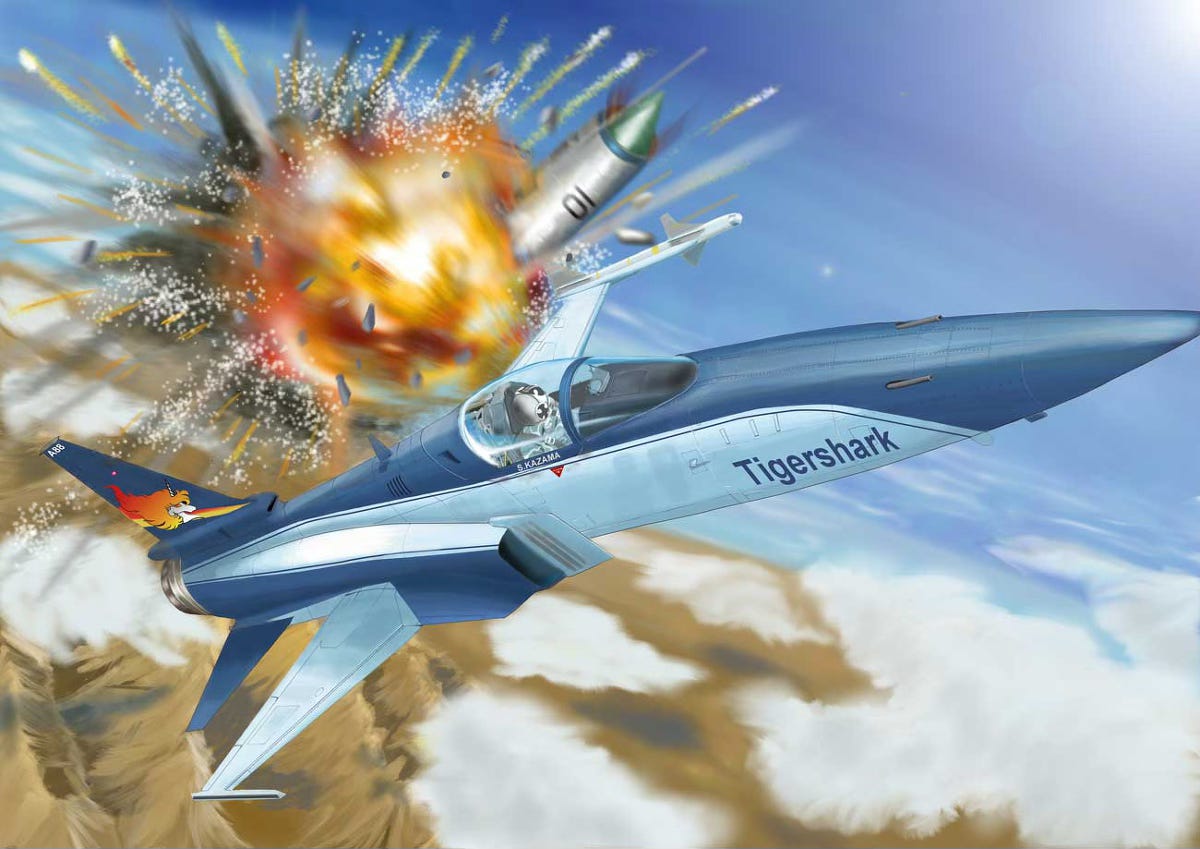September 13th, 1980, was the beginning of the end of an era. That morning, a squadron of Iraqi MiG-21s had just taken off and were heading toward their targets in Iran when one of them suddenly exploded. The Iraqis began their threat scan, but there were no bandits visible. Had it been an accident? A defective Russian bomb going off? But then the contrail was spotted. However, it looked like it stretched to infinity. There didn’t seem to be an aircraft to be found at the other end of that white trail of smoke.
The Iranians had just used one of their deposed Shah’s finest for the first time. A Phoenix missile with a range of over one hundred miles fired from an F-14 got its first kill.
The aerial dogfight didn’t end that day, and to be honest, the Phoenix system has had a mixed track record, but that day showed the path aerial warfare was going to take. Knights of the air, pitting their skills against one another in single combat, would become a relic of the 20th century. Future air wars would be decided by flying missile platforms trying to stay as invisible as possible, launching barrages at other “fighters” hundreds of miles away. The fact that an R variant of the B-1 was being seriously looked at as a flying air-to-air missile arsenal ship should tell you just how impersonal air-to-air combat will become.
But in the 1980s, that future hadn’t arrived yet. It was still the era of Top Gun, the Gulf of Sidra, and Desert Storm.* And if you were too old for G.I. Joe, it was also the age of Area 88.
In 1987, Eclipse Comics decided to broaden the horizons of American comic book nerds by introducing them to Japanese manga. Back then, manga was about as niche as you could get. It was pretty much solely the domain of military veterans who had learned to read kanji, plus exchange students. But Gen X was certainly more open to the idea than previous generations. We’d grown up on Speed Racer, Rankin-Bass cartoons, Star Blazers, and Robotech. While most of us had no idea just how gigantic Shonen Jump was, when we saw that Eclipse Comics had provided us with something that was clearly from the Land of the Rising Sun, our ears perked up.
It needs to be said, it wasn’t that easy for Eclipse. Translation is tricky at the best of times, particularly for a language that is as contextual as Japanese. ‘Hai’ can mean: yes, or orders accepted, or I’ll do it if I have to, or any number of other things, depending on how you say it. It’s pretty easy for the actual concept to be lost entirely just by picking the wrong word. Scripting is critical if you are going to get the story across. That’s not even dealing with the problem of idiomatics; getting across the (believe it or not) subtle shades of meaning in a phrase like, “Hold my beer, I’m gonna try something,” will be difficult because you have to find something culturally that’s a close fit and is also an idiom.
The second problem is just labor-intensive. The Japanese read right to left, and Americans read left to right. So flipping the manga is a pain in the ass.
Which is why Eclipse teamed up with a new startup called Viz Communications. This new venture was called Eclipse International and was an experiament for both companies.
Area 88 was already a hard wrap in Japan, so they didn’t have to worry about an ending (put a pin in that one), and there was already a lot of material available on day one, consequently Area 88 debuted as a bi-weekly.
The setting itself is kind of an interesting holdover from the Vietnam War, combined with the humiliation of the Iran Hostage crisis, yet told from a Japanese point of view. I know it’s hard to get across to Zoomers and Millennials, but back in the 70s, it had felt like any Third World basket case country could get away with kicking America in the nuts, mostly because thanks to Carter, they had.
Shin Kazama’s world was his oyster. He was the top pilot for NAMEHERE airlines, having been the top student at the world’s most prestigious aviation school, and he was engaged to the beautiful daughter of his company’s CEO. His best friend felt Shin was cheating at life, so he got him drunk and tricked him into signing a mercenary contract for the vaguely Imperial Iranian country they were in at the time, called Asran.
Shin wakes up to find that he is now indentured as a combat pilot for the next three years at Area 88. None of the fighters has the range to escape the country. The base is surrounded by desert, so he’ll die of thirst if he tries to walk out, assuming he isn’t shot. Or he can buy his way out if he racks up bounties to equal $1.5 million. The problem is he has to pay for his own equipment’s upkeep.
There is also the Little Wounded Bird subplot with his fiancée being courted by Shin’s “best friend.” She doesn’t know what happened to her beloved until she sees a picture of him in a magazine blah blah blah, everyone skipped over it.
What made Area 88 special was the emotional impact of the stories. Shin was determined to buy his way out, but as the war progresses and Shin becomes the top pilot at Area 88 he begins to lose himself. Home becomes a distant dream, and starts to live for the thrill of the kill.
The character development was good, the stories were dynamic, and skin of your teeth intense. In issue 8, the squadron runs into an enemy defense system called the Fang. It shoots down the entire squadron except for Shin and his wingman because they were flying F-8 Crusaders that could famously fly with their wings folded. In issue 10, the squadron runs into its own Red Barron when they start taking punishing losses from a MIG-23 pilot with a red salamander on his tail.
My favorite was #15, where Shin’s F-8 was destroyed and going to have to be replaced. He was close to buying his way out, but was now going to need a new plane, and that would set him back to zero. He considers defecting to the rebels and finally has to decide in this war that he has no stake in other than survival, where his loyalty lies. He finally decides he can’t bear the idea of flying missions against the men of Area 88.
The other thing that bought Area 88 it’s American fans was it’s gear porn. Area 88 was a buffet of 1980s warbirds.
Chance Vought F-8 Crusader
McDonnell Douglas F-4 Phantom II
Grumman A-6 Intruder
Republic F-105 Thunderchief
Saab 35 Draken
Lockheed F-104 Starfighter
Mikoyan-Gurevich MiG-19
North American F-100 Super Sabre
Dassault Mirage III
Dassault Mirage F1
Mikoyan-Gurevich MiG-27
English Electric Lightning
AV-8A Harrier
SEPECAT Jaguar
MiG-17 Fresco
MiG-23 Flogger
Sukhoi Su-22
Tu-16 Badger (bomber)
Mi-24 Hind (helicopter)
Lockheed C-130 Hercules (transport)
Fairchild Republic A-10 Thunderbolt II
This is a far from complete list.
Shin started off with a couple of Vietnam-era antiques the F-8, (a punishingly difficult plane to fly but a correspondingly rewarding one if you could master it). The F-5 Tiger II. And the symbol of Shin’s evolution and story arc the F-20 Tigershark (the greatest thing that never was).
Kaoru Shintani lovingly rendered all of these warbirds with an autistic attention to detail ouand did a superb job of utilizing their known strengths and weaknesses to tell Shin’s story.
But how did it end for Shin and his magnificent 80s manga hair?
Damn. Good. Question.
When Eclipse pulled the plug after 18 months, Viz went into publishing, they did fine with that. Unlike Eclipse Comics, Viz Media is still in business. However, they pulled the plug on Area 88 when the story was only about 2/5s told. American readers never did find out how the story ended until much later by watching the OAVs.
Or to be more exact we got to see the OAV’s ending, which was much different from the manga’s. There was also a 2004 TV series that had a third ending. So, speaking as an Area 88 fan from back in the day, I don’t want to hear shit from George RR Martin fans.
Area 88 is, truthfully, a seminole work of manga whose influence is felt in every warbird manga that followed it. Area 88 predates Macross and helped set the tone for combining character drama with military aviation. The emotional complexity of fighter pilots and love triangles echoes Shin Kazama’s personal struggles. In the mecha genre, Gundam 0083 incorporates realistic military politics and the emotional toll of war, much like Area 88. Skycrawlers maintained the traditions of mercenary fighter pilots and lovingly detailed aircraft (even if those aircraft never flew off the drawing boards).
Area 88 retains an enduring emotional resonance (even if that emotion is frustration) with the first wave of American manga fans, and it is still a favorite of aviation enthusiasts.
Is it still worth reading today? If you can read Japanese sure. Other than that stick with the OAVs.
Discuss in the comments below
*Yeah, I know it was 1991. I was there. But those were 1980s dogfights.











This was a defining manga that I discovered in high school and left a permanent imprint on my brain. Thanks for bringing this up!
It was also adapted into an excellent SNES shmup that they renamed to “U.N. Squadron.”
https://youtu.be/lY4Z8I7oA5A?si=bA6YaCWZQ68OuaUC